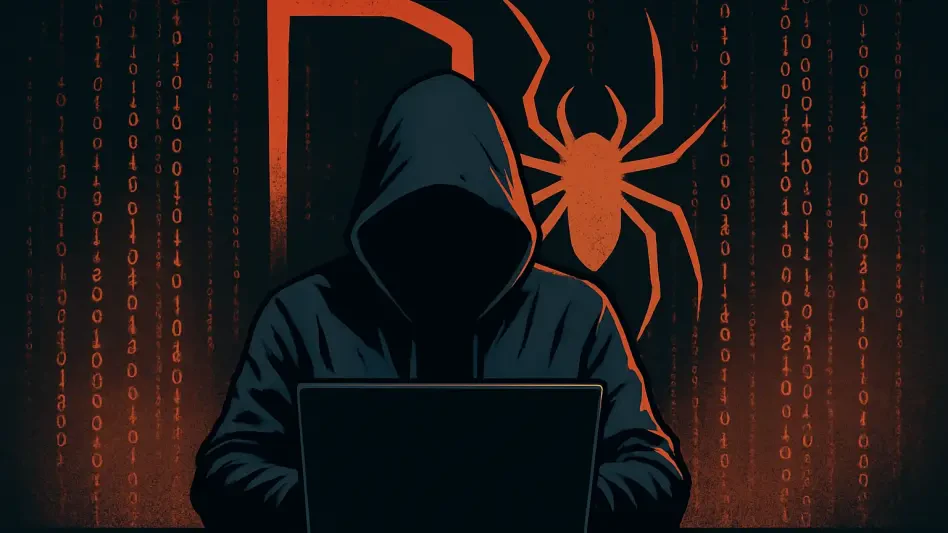February 2025 marked an unprecedented surge in ransomware attacks, setting new records in cybersecurity threats. Bitdefender’s March 2025 Threat Debrief provides an exhaustive analysis, identifying key trends, tactics, and statistics that underscore the alarming rise in ransomware activities during this period. The report, curated by cybersecurity experts, reveals the evolving strategies employed by ransomware groups and offers essential recommendations for defense mechanisms.
Surge in Ransomware Attacks
February 2025 witnessed a stunning 126% year-over-year increase in ransomware victims, jumping from 425 in February 2024 to 962 in February 2025. This dramatic surge is primarily attributed to the Clop (Cl0p) ransomware group, which alone claimed 335 victims, showcasing a significant escalation in their activities.
Ransomware groups have shifted their focus towards exploiting newly discovered software vulnerabilities, particularly in edge network devices. This new tactic involves automated scans to identify high-risk vulnerabilities, gaining initial access, and subsequently executing manual hacking phases to evade detection and intensify attacks. This strategic shift marks a significant evolution in the cybercriminals’ approach, making their operations more adaptable and persistent.
Bitdefender’s analysis emphasizes the importance of understanding the context in which these attacks are occurring. By tracing the origins and methods of these cyberattacks, the report highlights the complexity and sophistication involved in modern ransomware campaigns. The increase in activity by the Clop group, for example, underscores how a single group’s tactics can have widespread ramifications, affecting numerous organizations and individuals.
Detailed Attack Flow
Bitdefender’s report details the typical ransomware attack flow, emphasizing vulnerabilities that allow remote control of systems (RCE) and have been publicly disclosed with exploit proofs. This structured narrative reveals the complexity behind these attacks and the steps cybercriminals take to penetrate deeper into systems. The methodology involves using publicly available information to launch initial automated scans, identifying vulnerable systems, and then progressing to more targeted, manual hacking phases to avoid detection.
The initial access often precedes the actual ransomware attack, illustrating the manual effort required to reach critical data. The delay between the initial breach and the deployment of ransomware or data theft highlights the meticulous planning and effort involved. Threat actors exploit this window to establish a stronger foothold, ensuring they can execute their malicious actions with maximum impact. This period of dormancy before the attack is a critical phase that defenders must be aware of to implement timely countermeasures.
The exploitation process highlights the sophisticated techniques ransomware groups deploy to maximize their impact while remaining unnoticed. Techniques such as ‘Living Off the Land,’ where attackers use legitimate tools and processes to further their malicious aims, make detection even harder. By blending in with regular network activity, these groups can extend their presence within a system, gathering data and preparing for larger attacks.
Defensive Strategies
Smart patching emerges as a critical defense mechanism, prioritizing patches for actively exploited vulnerabilities and ensuring a flexible and rapid response. By focusing on vulnerabilities with high CVSS scores and public proofs of concept for exploitation, organizations can proactively mitigate potential threats. This approach ensures that the most critical vulnerabilities are addressed first, reducing the risk of exploitation by ransomware groups.
Additional recommendations include threat hunting to detect hidden threats before a major attack and advanced detection systems (EDR/XDR) combined with expert analysis (SOC/MDR). These measures aim to identify lateral movements within networks and prevent adversaries from accessing sensitive information. Threat hunting involves actively searching for potential threats that may have bypassed initial security measures, providing an additional layer of security.
Bitdefender also stresses the importance of continuous education and training for employees. By educating staff about the latest ransomware tactics and encouraging a culture of cybersecurity awareness, organizations can bolster their defenses. Regular training sessions and simulated phishing attacks can help employees recognize and respond to potential threats more effectively.
Notable News Highlights
The report sheds light on various noteworthy developments in ransomware activities, such as the emergence of new tools and groups, the evolution of existing tactics, and significant insights from leaked communications. The introduction of BlackBastaGPT, a chatbot aiding in the analysis of Black Basta’s leaked chats, provides valuable intelligence on the group’s operations. This tool reveals insights about the group’s profits, their use of deepfakes, and the internal dynamics within the group, offering a deeper understanding of their modus operandi.
Other significant news includes CISA’s advisory on Ghost ransomware, detailing the tactics of this group, and RA World’s attacks using DLL sideloading techniques traced to Chinese threat actors. These revelations underscore the diverse and adaptive nature of ransomware operations today. For instance, Ghost ransomware’s use of known vulnerabilities and tools like PowerShell scripts and Cobalt Strike highlight the importance of securing commonly exploited software.
Bitdefender also highlights the adaptive nature of ransomware groups such as Akira, which compromised a webcam to bypass traditional defenses. This innovation demonstrates the lengths to which cybercriminals will go to achieve their goals, constantly evolving their tactics to outsmart security measures. By staying informed about such developments, organizations can better prepare for emerging threats.
Top Ransomware Families and Targeted Countries
Bitdefender’s analysis identifies the top 10 ransomware families and the countries most frequently targeted by these threats. Developed nations remain the primary focus for ransomware gangs, driven by their higher potential for financial gain and the critical infrastructure available. By targeting these countries, ransomware groups can maximize their profits, extorting organizations operating within essential sectors like healthcare, finance, and government.
The report highlights the importance of continuously upgrading cybersecurity measures to stay ahead of evolving ransomware tactics. Specific groups like Cactus and FunkSec have demonstrated sophisticated methods and the use of AI to further their agenda. Cactus, linked to Black Basta, employs social engineering and tools like Quick Assist and Teams for persistence, offering a glimpse into the advanced techniques used by modern ransomware groups.
Understanding the geographical focus and operational strategies of these groups allows organizations to tailor their security measures to specific threats. By recognizing which countries and sectors are most at risk, businesses can prioritize their defense efforts accordingly. Implementing tailored strategies ensures that resources are effectively allocated to protect against the most relevant threats.
Conclusion
In February 2025, there was an unprecedented surge in ransomware attacks, setting new records in cybersecurity threats. The March 2025 Threat Debrief by Bitdefender offers a comprehensive analysis of this alarming trend, highlighting key patterns, techniques, and statistics that contribute to our understanding of the spike in ransomware incidents during this period.
The report, created by seasoned cybersecurity experts, reveals how ransomware groups have evolved their strategies to become more sophisticated and damaging. It breaks down the various tactics used by these cybercriminals, such as advanced encryption methods and new delivery mechanisms that make ransomware harder to detect and mitigate.
Bitdefender’s report also offers critical recommendations for bolstering defense mechanisms against such threats. Companies and individuals are advised to improve their cybersecurity measures, update their systems regularly, and conduct frequent data backups. The report emphasizes the importance of employee training in recognizing phishing attempts and other common methods used by attackers to infiltrate networks.
This surge in ransomware attacks underscores the pressing need for heightened awareness and proactive measures in cybersecurity. As the tactics used by ransomware groups continue to evolve, it is crucial for organizations and individuals alike to stay informed and prepared to counter these increasingly sophisticated threats.








